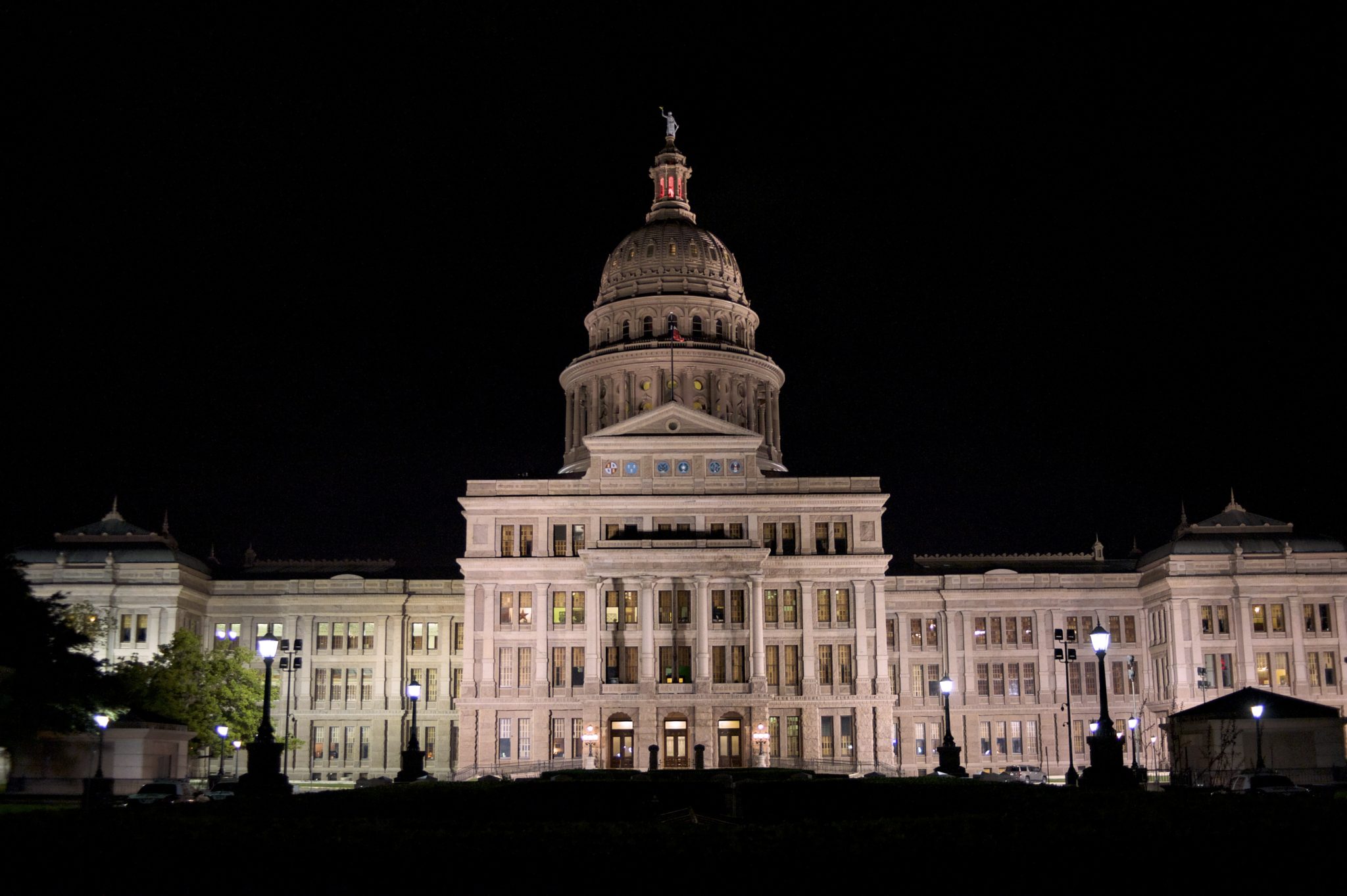
Texas Had a State Office That Could Have Investigated Racial Disparities in COVID-19 Cases. Lawmakers Defunded it Three Years Ago.
While early reports elsewhere show African Americans disproportionately infected and dying from COVID-19, Texas’ data is incomplete.
Above: In 2017, lawmakers quietly defunded an office dedicated to studying and solving racial inequities across the state’s health agencies.
In 2005, faced with data showing that black and Native American families were overrepresented in Texas’ child welfare system, lawmakers ordered Child Protective Services (CPS) to study whether staff treated any racial or ethnic groups more harshly than others. The analysis ultimately showed that the department was more likely to remove children from black parents than from white parents and was less likely to offer services to black and Native American families, all else being equal. “The only difference was race,” says Joyce James, a former CPS official who helped lead the effort to lower the disparities.
James’ work would eventually become the Center for Elimination of Disproportionality and Disparities, which officials created and appointed her to lead in 2010. The office, which James says was revolutionary for the time, then expanded to studying and solving racial inequities across the state’s health agencies and was renamed the Office of Minority Health Statistics and Engagement. Texas has many disparities to interrogate: Black and Hispanic communities have higher rates of chronic illnesses like diabetes and hypertension and far higher uninsured rates than their white counterparts. In 2017, while Democrats were pushing for changes after new data showed that black women die of pregnancy-related causes at far higher rates, the Texas Legislature quietly defunded the office during a budget crunch.
Now some lawmakers want to revive it, calling the COVID-19 pandemic a wake-up call for governments to address structural racism. Early data shows the virus has carved an especially devastating course through the black community, which is disproportionately represented in confirmed cases and deaths in cities across Texas and the country. Yet the state’s overall tracking of racial disparities in the pandemic is scattershot and incomplete.
James says the state might have been better prepared for the virus had the office continued its work. “Black people are not more likely to be infected; it’s what happens when you layer this on top of health disparities that already exist,” she says.
Black lawmakers are calling on state officials to consistently track racial disparities in confirmed COVID-19 cases and deaths. This week, state Representative Shawn Thierry, D-Houston, drafted a letter to Governor Greg Abbott asking him to create an emergency task force to study demographic factors and look at how bias plays out in who gets tested, who has access to treatment, and who receives a ventilator. (A bill she authored last year to require implicit bias training for medical professionals did not pass.) State Representative Garnet Coleman, D-Houston, sent a letter last week to John Hellerstedt, the state health commissioner, asking the agency to collect all COVID-19 data by race and ethnicity, including rates of infection, hospitalization, ICU stay, and death.
“If that office had been in place for the past several years, we may have already identified some actions that could have decreased the disproportionate impact that is occurring now, and saved some lives.”
But lawmakers and advocates say the now-dismantled minority health office could have helped track these disparities from the beginning. “African Americans are employed in jobs that don’t have health insurance and have the highest rates of heart disease, cardiovascular disease, strokes, and diabetes. This comes from not having regular sources of care across the board,” Coleman says. The elimination of the Office of Minority Health Statistics and Engagement “shows there is disregard for keeping those statistics on a state level,” he says. “The rug was pulled from up under that office.”
Meanwhile, an AP analysis of available data across the U.S. found that black people made up more than 30 percent of deaths but just 13 percent of the population covered by the review. Democratic U.S. lawmakers filed legislation this week that would mandate the federal government release this demographic information daily, which it has so far declined to do. Already, available local data from a few Texas cities echoes trends seen nationally: Last week, Houston’s health authority acknowledged that early numbers showed that black Houstonians were suffering “the worst consequences” of the virus. In San Antonio, African Americans, who make up about 8 percent of the population, have accounted for 13 percent of confirmed cases and nearly a third of local deaths.
Meanwhile, the race and ethnicity data that the state health department is collecting is incomplete. The Department of State Health Services relies on case investigations from local health departments, but these reports are slow to be processed, and although they include a spot for race/ethnicity, it’s often left blank. As of Thursday, about 16,500 COVID-19 cases had been confirmed statewide, but just over 2,200 case investigations had been completed. Of these, about 20 percent were marked “unknown” for race/ethnicity. The state health department is not publishing demographics of confirmed deaths online, but data shared with the Observer earlier this week included only 65 completed case investigations of the 318 deaths confirmed at the time. Case investigations for the rest hadn’t yet been received from local health departments, according to a spokesperson. (The total confirmed fatalities statewide reached nearly 400 by Thursday afternoon.)
Last week, Hellerstedt said in a news briefing that the state is prioritizing bigger-picture case data for now. “I think if we get this under control better, we will be able to expect that our folks in the field who are providing that reporting and filling in those fields are going to have enough time in the day to get it done,” he told reporters.
But people who have done this work in Texas say the lag demonstrates officials’ lack of prioritization of communities of color. And the urgency is mounting as coronavirus cases balloon in black and brown communities in parts of East Texas and the Rio Grande Valley, where residents have high rates of underlying health conditions and limited medical resources.
“I think that office was never really given the budget to do what it could have done and to be what it could have been,” says Lauren Lluveras, who worked at the Office of Minority Health Statistics and Engagement in 2017. Lluveras, whose work helped black and Latinx communities address racial disparities in teen pregnancy and infant and maternal deaths, always thought the office felt small—26 staffers and a budget of about $2 million—given the enormity of the task at hand. “For that office to not exist at all is very sad and says a lot.”
State Representative Donna Howard, D-Austin, calls the quiet elimination of the office, particularly amid the maternal mortality data, “astounding.” She plans to try to reinstate it in some form next session.

The lack of solid demographic information on COVID-19 in Texas now is part of the “whole dysfunctional way we’re doing data,” and the “wholly inadequate testing,” Howard says. She believes employees at the minority health office could have tracked this data as the pandemic unfolds, making it a “focus,” rather than an “afterthought.” And “if that office had been in place for the past several years, we may have already identified some actions that could have decreased the disproportionate impact that is occurring now, and saved some lives,” she says.
Former employees say that if the office were still around, they would have had people inside state government pushing for data and compiling their own analysis. More than that, they would have been doing work on health disparities before COVID-19: How and why black people are more likely to have health conditions and jobs that make them more vulnerable to the virus, yet less likely to have the treatment available.
“We have been socialized to believe the underlying conditions that make them more affected by COVID is of their own doing,” James says. “We have become numb to the racism that has been killing generations of people.” The important question is, “What is it about the designs and systems of our institutions that have kept these disparities in place?”
James, who left the state office in 2013, says its work was critical, but as it expanded to include cultural competency training across multiple agencies, she says some state employees began to get uncomfortable talking so much about structural racism. “Nobody wants to be associated with the old association of racism, individual acts of meanness and bigotry,” says James, but undoing structural racism is about more than rooting out individual bias. “Without work to transform and understand the history of these systems and how they’ve failed communities, they will continue to do exactly what they were designed to do.”
Find all of our coronavirus coverage here.
Read more from the Observer:
-
Mi Barrio No Se Vende: San Antonio is planning to demolish its oldest and largest public housing project, threatening the future of a deeply historic neighborhood—one that anchors the city’s identity as the nation’s Mexican American capital.
-
From Jail to the Streets: One Texan’s Story During COVID-19: The homeless are 11 times more likely to be incarcerated than the rest of the population.
-
‘I’m in Limbo Here’: Texans Are Met with an Overwhelmed and Antiquated State Unemployment System: The safety net meant to support the second largest workforce in the country is using decades-old technology. The workforce agency was trying to replace it when the pandemic hit.


